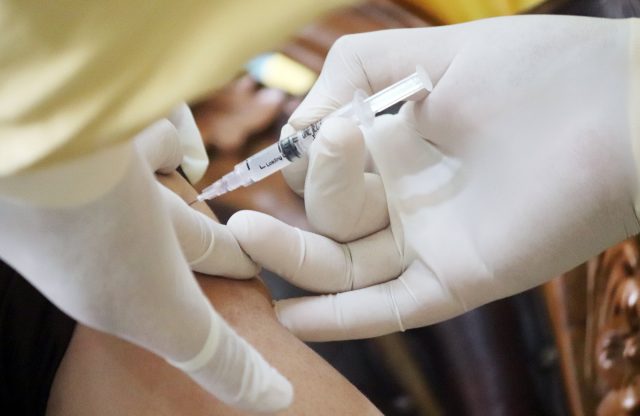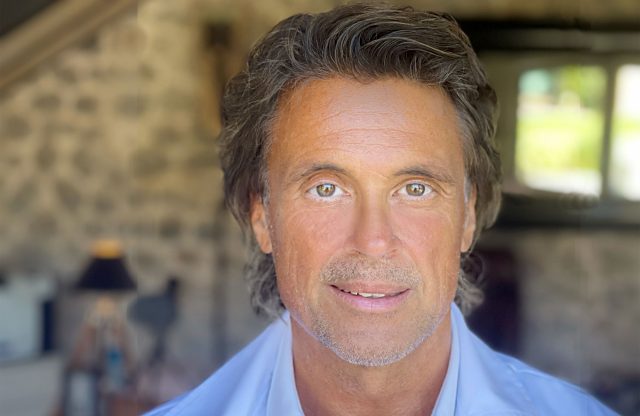How long does the protection afforded by vaccination last?

Dr Robert Hess – 06/19/2021
How long does the protection afforded by vaccination last? This is a vital question that can only be answered when enough time has elapsed for results to come in.
There is one thing we can be certain of, however, namely that the protection afforded by vaccines does not live up to the claims made by their manufacturers. We strongly disagree with the assertion that “vaccine protection will remain at the same high level for approximately one year, so that we can get into an annual vaccination cycle like the one we have for influenza.” This is the reason why we set up our SARS-CoV-2 Antibody Profile Monitoring for Premium clients at the start of this year, measuring levels of SARS-CoV-2 antibodies as well as T-helper cells specific to SARS-CoV-2 and thereby covering both pillars of the immune response.
There are as yet no clinical studies to refer to, so we are in completely uncharted territory here. It is a matter of great concern to us that some of our clients who have been fully vaccinated for several months now appear to have built up little if any immune protection. In the circumstances, this monitoring of antibodies makes a lot of sense, and various scientific institutes have approached us to draw on our experience in this field.
Immune protection is, of course, also a subject of concern to the wider population, and many people, fearing that the immune protection they have gained from vaccination may already be weakening, are already asking for a third booster shot. The fact is that not a single scientific body has ventured an opinion on the matter. This means that Dr Robert Hess is entering completely new territory. We will not be making any general recommendations, as the individual situation of each client is different. The structure of each immune system is also highly individual with regard to natural immune response, vaccine-induced antibody levels and exposure to mutation events dependent on geographic location. We will therefore only make recommendations about booster jabs or next generation vaccines tailored to the individual client. We believe that it is simply impossible to devise a vaccination scheme in which the intervals specified are valid for everyone. This simply makes no sense. Consequently, a universal recommendation is completely out of the question.
Dr Robert Hess has also gained insight into the workings of the T-cells. First indications are that that they prevent severe infections, but not to the extent that has now been claimed in various scientific publications.
Furthermore, we also have to consider the special needs of so-called “low responders” or “non-responders” to the vaccines among our own clientele. We have to assume that such cases are more frequent than has been surmised so far. Low responders and non-responders are individuals who have acquired minimal or zero immune protection through vaccination. Among our clientele, we also have non-vaccinated Covid-19 survivors of whom around 25% have not built up any protection at all. This is a significant difference compared to measles, for example. The immunity of those who have recovered and those who have been vaccinated clearly decreases, and the curve falls away dramatically after about three months. The idea that there are people who cannot become infected has been absolutely refuted. Most people who have not been vaccinated will probably become infected at some point, but whether they end up as symptomatic or asymptomatic cases is another question. This is essentially what characterizes respiratory viruses in contrast to HIV, for example. There are people who are immune to the AIDS virus due to certain genetic polymorphisms which, by the way, we also measure as standard for our Premium clients. This is not the case with the novel coronavirus, unlike the Spanish flu, with which it is repeatedly compared: it has to be emphasized that the history of SARS-CoV-2 so far clearly points to each successive mutation event being more infectious and/or more dangerous.
The current prognosis of the Task Force of Dr Robert Hess still holds true: the pandemic is going to persist for a very long time, and the prospect that the virus will be with us forever is becoming more and more likely. This is because recovered and vaccinated individuals can still be carriers of SARS‑CoV‑2 and because the virus is mutation prone. There is also the potential for the animal kingdom to act as a reservoir for the disease – it is not yet known which animals can become infected with SARS‑CoV‑2 and spread the virus. From the case of the mink farms in Denmark, which we reported on in great detail a year ago, there are now very alarming statistics on how dangerous it is when animals also become infected. If we assume a similar regime as with influenza (bearing in mind that we have only moderate control over this less aggressive virus), then we will need to have an annual cycle of vaccination, because the previous year’s vaccines are never a perfect fit for the pathogens currently in circulation. This will definitely be the case with SARS-CoV-2 as well. Every year, the death rate from influenza in a medium-sized country such as Germany is around 10,000, sometimes even higher. In the more severe influenza years, for example on the American East Coast, the intensive care units are stretched to capacity. And if we add Covid-19 to the equation, hospital systems worldwide will have to be restructured.
As Dr. Robert Hess mentioned already, the level of protection depends on the sum total of antibodies, which obviously forms part of our monitoring. The antibodies are all directed against the spike protein, but not necessarily against the same regions. Many different types of antibodies are formed, which our monitoring classifies according to their effectiveness. In the case of a second infection, antibodies can even amplify the symptoms. However, the more antibodies there are in total, the greater the probability there will be some that also protect against mutations. The crucial question here is how high the antibody titer must be to protect against infection. In professional circles, we call this the “correlate of protection”, a figure that is usually defined by the WHO. Hepatitis provides a precedent: when the concentration of antibodies falls below a certain value, vaccination is called for; as long as it remains above that value, vaccination is not required. This is how the disease is managed. No such value exists for SARS-CoV-2, as no studies have been done on this so far. From our own SARS-CoV-2 antibody monitoring, we assume an average value of at least 3,000 BAU per mL, where BAU refers to binding antibody units with the relevant average efficacy classification.
Among the low responders and non-responders, there is a large group of people who take medications that suppress the immune system, or who have a donor organ and take drugs that prevent the immune system from rejecting it. This inevitably has the consequence of making pathogens difficult to fight off, but at the same time, the reaction to vaccine antigens is also weakened. This is a situation that affects patients who have to take anti-cancer drugs that affect the functioning of the immune system. Some of these medications can almost completely eliminate the B lymphocytes, which are important for the formation of antibodies. This is because the immune response occurs in several parallel pathways. The reaction to antigens produced to counter pathogens or derived from vaccination depends on how well the individual pathways work. One level is the antibody response, for which the above-mentioned B lymphocytes are indispensable. For example, rituximab, which is prescribed to alleviate certain types of cancer or arthritis, prevents the formation of B-lymphocytes and as such is a drug that needs to be taken into account here. Furthermore, there are steroids and antimetabolites that inhibit cell division and thus impair immune function in various ways. Added to which, there are the calcineurin inhibitors, such as cyclosporine and tacrolimus, which alter the T-cell response, namely that part of the immune response that may offer a certain long-term protective effect.
In non-responders with rheumatic diseases, their treatment usually involves a smaller number of immunosuppressive drugs. The dosage and effect are therefore less significant than with immunosuppression in organ transplant recipients or certain tumor patients. Nevertheless, a reduced effect is also to be expected here. The same applies to allergy sufferers who occasionally take antihistamines or use sprays and creams containing cortisone. There is definitely a reduced effect here, though by no means as drastic. We have already observed this with our Premium clients in the analysis of their antibodies.
In answer to the question of whether there is at least a T-cellular immunity in the case of a poor antibody response, we have evidence to support this, but not nearly as definitively as has been suggested in scientific publications over recent months. There have been indications that some immunity is gained, but at a far lower level than assumed. In our opinion, T-cells offer virtually no protection against actual infection, but they do make a severe course of disease less likely.
We already mentioned that we are working to build up T-cell specific immune response alongside antibodies. This development is eagerly awaited.
The question of whether mRNA or vector-based vaccines are preferable for the low-responder groups arises regardless of the reasons for their immune system deficiency. Ultimately, we have to assume that congenital immunodeficiency is a contributory factor with low-responders, irrespective of the risk groups just mentioned. This is confirmed for us on the one hand by the data derived from our own Premium clients, and on the other hand by the data that has come to us from the UK. To date, it has been shown that higher antibody titers can be expected after a first vaccination with an mRNA-based vaccine than after a first vaccination with a vector-based vaccine. As regards T-cell level, however, the situation is exactly the reverse: a higher value can be observed after a first vaccination with a vector-based vaccine. We should soon have the relevant data for the second vaccination. We see here that the combination of a first vaccination with a vector-based vaccine and second vaccination with mRNA can produce up to 10 times more antibody titers than if a vector-based vaccine is administered twice. As far as T cells are concerned, the combination of both principles also seems to be very effective. And that is why the best strategy for booster vaccinations has to be clarified with some degree of urgency. Our vaccinated clients have almost exclusively received an mRNA-based vaccine for both jabs.
Regarding the question of how a program of booster vaccinations might look, there are a couple of options available: on the one hand, a next-generation mRNA vaccine which also increases T-cell stimulation, and on the other hand (depending on the results in those affected), it may be possible to switch to a vector-based vaccine for the booster.
In conclusion, we can say that individualized vaccination schedules would be the optimal route to go down. I see it as my job to develop a long-term individual vaccination scheme.

